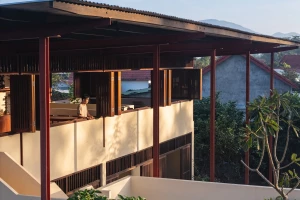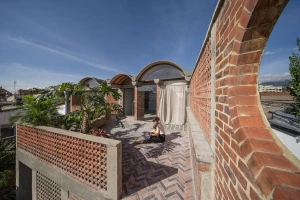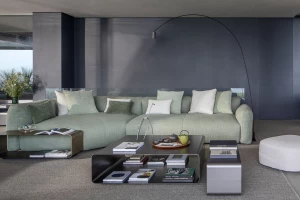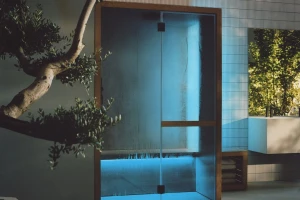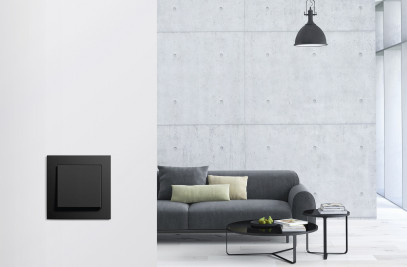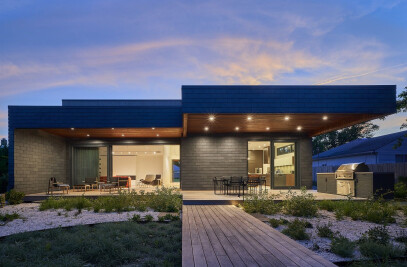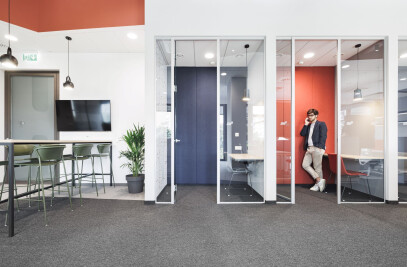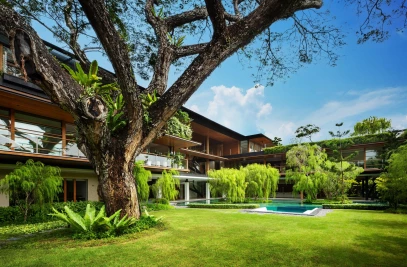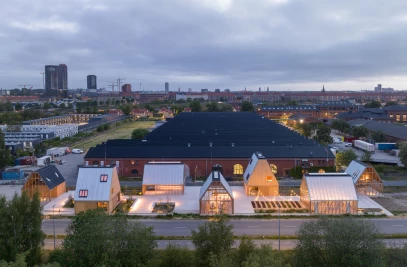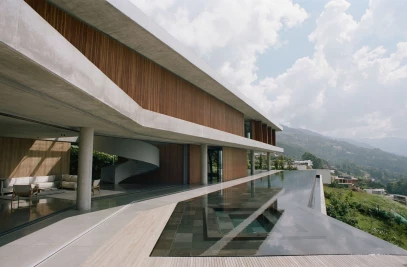Constructed in 1888 by architect Julien Gaudet for the National Post Office, La Poste du Louvre has gone through nearly a half-century of history. Its most recent transformation, undertaken by Dominique Perrault Architecture, places it at the centre of a series of major projects in the heart of Paris that aim to enhance the restaurants, cultural life, shopping and museums of the city.

A shining example of the industrial era construction techniques of its day, the original building is characterised by elegantly dressed stone facades behind which are powerful buttresses and long-span metal frame of the Eiffel type, which afford maximum interior flexibility. This flexibility in part has lead to various modernization campaigns, carried out mainly from the 1960s to the 1980s.

The existing building was closed on three sides, and open to the public through its single post office. The urban and architectural concept of this latest scheme reintroduces this legacy complex into the life of its neighbourhood and makes it a place of sociability and services accessible for all. It is a transformation of a monofunctional building dedicated to postal activities into a volume of mixed uses, as well as the transformation of a closed volume into a more open volume.

From the outside, the project forms a compelling connection with its surrounding environment with the creation of a network of porches, arcades and galleries. Five passageways now converge towards the heart of the block, from the streets of the Louvre, Jean-Jacques Rousseau, Etienne Marcel and the Gutenberg passage.

They converge on a central courtyard, designed as an open-air industrial courtyard, around which shops and services will open. La Poste du Louvre thus opens up to the city and serves as the setting for a new urban square, allowing a maximum of natural light to enter its heart and revealing to all the impressive volumes and the interplay of the historic metal structures.

The programmatic mix of the new Poste du Louvre is based on horizontal layers. The basement, on two levels, houses urban logistics areas while the first floor, under the arcades on the street and around the inner courtyard, includes shops, the historic post office and the various addresses of the establishment.

On the upper floors, offices are organized between the courtyard and the street. In total, nearly 14,400 square meters of program use is spread over three levels and two floors (the first floor has mezzanines, accessible by large metal staircases), On the top floor and roof, the new hotel, with the garden and terrace level above, takes its place in the Parisian roof scenery.

The majesty of the volumes, the restored vaults of the existing brick ceilings, the exposed Eiffel-style structures and the ceiling heights offering a maximum height of 6.80m, give a unique character to the floors, and the new glass curtain walls and glass shed roofs ensure optimal penetration of natural light.

The existing stone façade has been restored to its initial architectural quality with new curved glass windows. The restoration of the original metal structure - frameworks, capitals, porticos and vaults - highlights the structural quality of the steel construction and allows natural light to flood into the building.

The primary structure of the existing building, with its metal posts and beams, is mostly restored and reused. A new self-stable structure, totally independent of the structure designed by Julien Guadet, is also introduced into the existing volume to support the new loads and to ensure the requirements of fire control on the levels concerned (particularly for the hotel).












